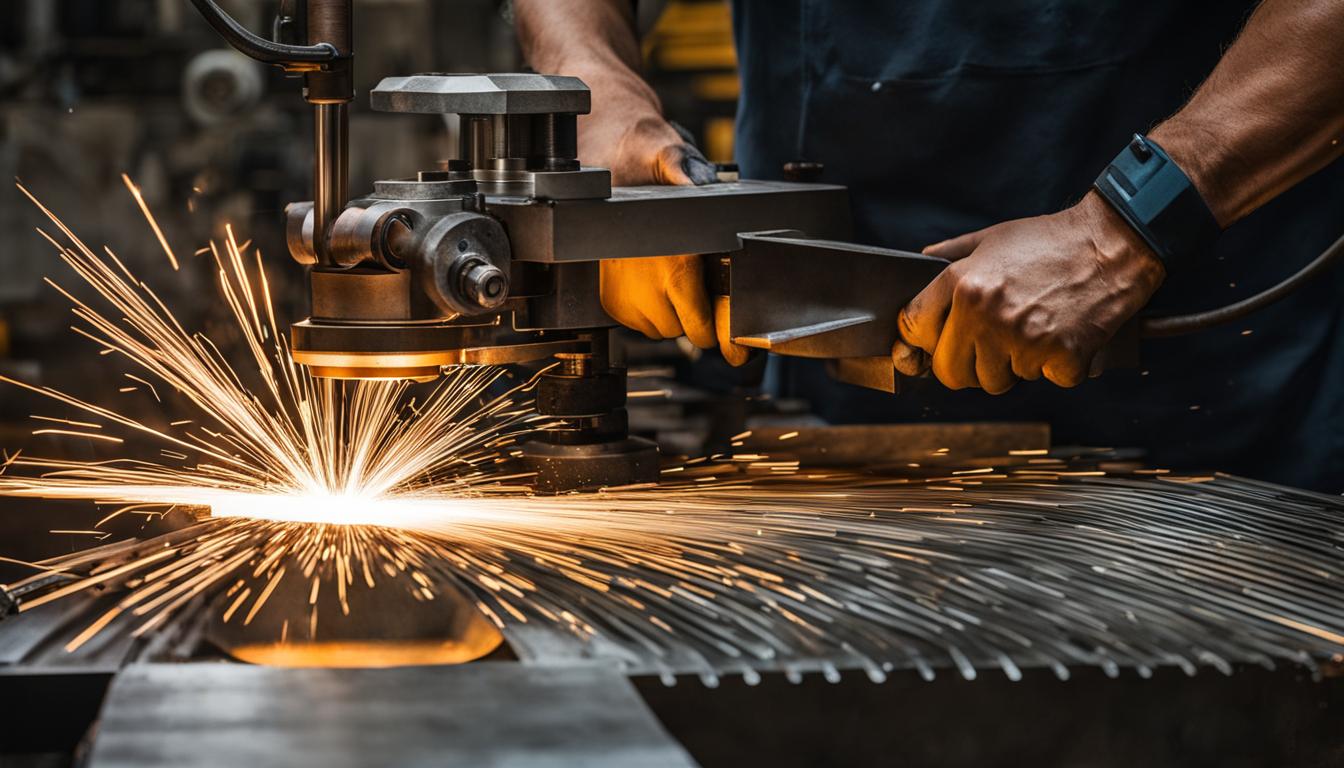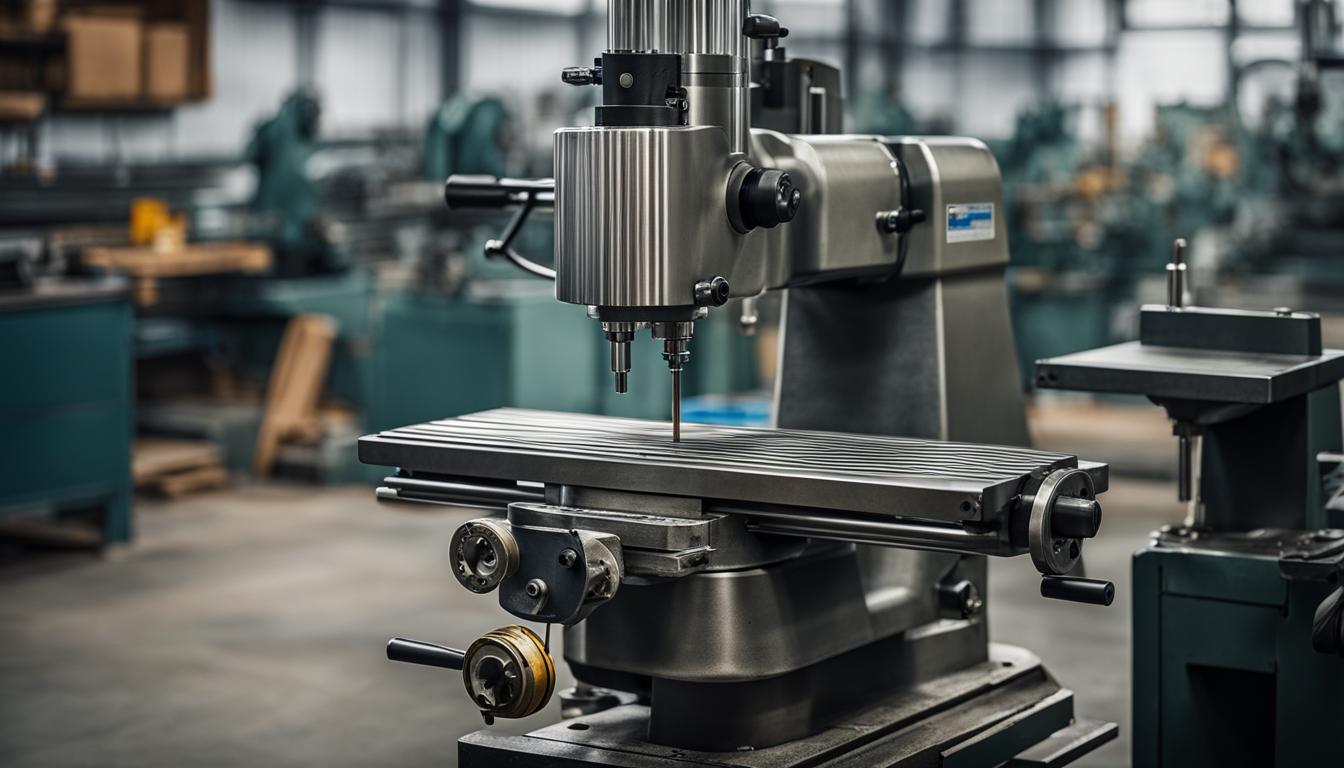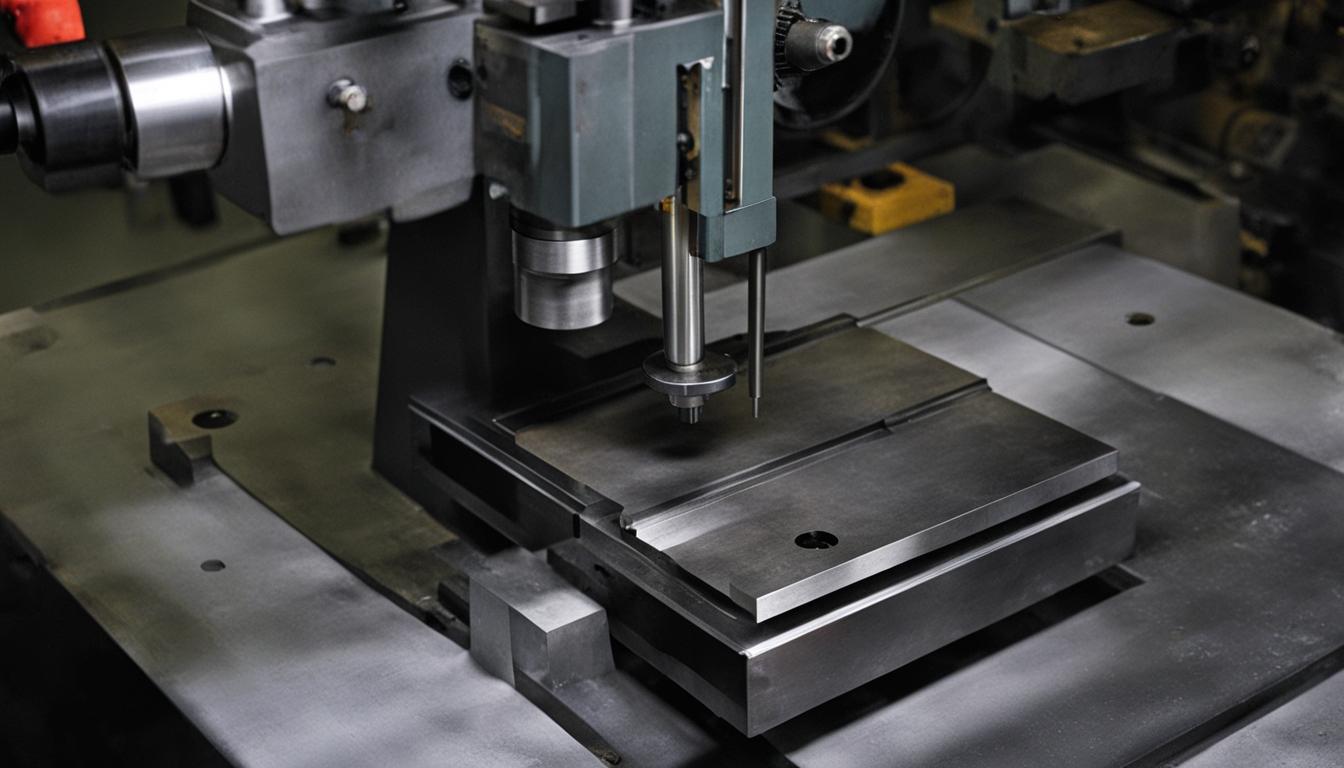A manual milling machine is a precision metalworking tool used to shape and fabricate various materials, primarily metals, through a controlled material removal process. It consists of a sturdy base, a worktable that can move in multiple axes, and a rotating cutting tool called an end mill. The operator manually controls the movement of the workpiece against the spinning cutter using hand wheels, allowing for precise cuts, slots, holes, and contours to be created.
These machines are versatile and can perform a wide range of operations, including face milling, end milling, drilling, and boring. Manual milling machines are valued for their accuracy, reliability, and ability to produce complex parts with tight tolerances. They are commonly used in machine shops, tool rooms, and educational settings for both prototype development and small-scale production. While CNC milling machines have become more prevalent in modern manufacturing, manual milling machines remain essential for many applications due to their simplicity, cost-effectiveness, and the hands-on skill they allow machinists to develop and maintain.
- A manual milling machine is an industrial machine tool used for material removal.
- It can be either a vertical or a horizontal machine, depending on the spindle orientation.
- The main components of a manual milling machine include the base, column, knee, saddle, spindle, arbor, worktable, headstock, and overarm.
- There are different types of manual milling machines, such as column and knee milling machines, as well as universal milling machines.
- Understanding the basics of manual milling machines enables operators to perform a wide range of milling operations with precision and accuracy.
How Does a Manual Milling Machine Work?
In a manual milling machine, the cutting tool is mounted on the spindle, and the workpiece is fixed on the worktable. The operator adjusts the position of the workpiece and moves the table to bring it into contact with the rotating tool. As the tool cuts into the workpiece, material is removed, creating the desired shape or surface. The operator controls the speed, feed rate, and depth of cut to achieve the desired outcome. Manual milling machines can perform various operations, such as drilling, boring, threading, and slotting, by changing the shape and type of cutting tools.
To better understand the milling process, let’s take a look at some common milling operations:
- Drilling: In this operation, a drill bit is used to create holes in the workpiece.
- Boring: This operation is used to enlarge an existing hole or create a cylindrical cavity.
- Threading: Threads are cut into the workpiece using a threading tool.
- Slotting: Slotting involves creating narrow, elongated cuts in the workpiece.
By changing the shape and type of cutting tools, operators can perform a wide range of milling operations, making manual milling machines versatile tools in various industries.
Milling Tools
Manual milling machines utilize different types of milling tools to perform various operations. Here are some commonly used milling tools:
| Milling Tool | Function |
|---|---|
| Drills | Create round holes |
| End mills | Machining grooves, slots, pockets, and contours |
| Face mills | Remove a large amount of material to create flat surfaces |
| Dovetail cutters | Cut dovetail angles into a workpiece |
| Boring heads | Enlarge existing holes |
These milling tools enable operators to perform precise and efficient milling operations, providing flexibility and versatility in manual milling machine applications.
Types of Milling Machine Tools
In manual milling machines, a variety of milling tools are used to perform different types of milling operations. Understanding the different types of tools available is crucial for achieving desired results in machining processes. Here are some commonly used milling tools:
- Drills: These tools are used for creating round holes in the workpiece.
- End mills: End mills are versatile tools used for machining grooves, slots, pockets, and contours in the workpiece.
- Face mills: Face mills are designed to remove a large amount of material and create flat surfaces.
- Dovetail cutters: Dovetail cutters are used for cutting dovetail angles into the workpiece.
- Boring heads: Boring heads are used for enlarging existing holes in the workpiece.
These tools allow operators to perform a wide range of milling operations and achieve various shapes and finishes on the workpiece.
Table: Types of Milling Machine Tools
| Milling Tool | Function |
|---|---|
| Drills | Create round holes |
| End mills | Machining grooves, slots, pockets, and contours |
| Face mills | Remove material and create flat surfaces |
| Dovetail cutters | Cut dovetail angles |
| Boring heads | Enlarge existing holes |
By selecting the appropriate milling tool for each operation, operators can achieve precise and efficient results in manual milling machines.
Millling Machine Components and Their Functions
In order to fully understand the manual milling machine, it’s important to be familiar with its main components and their respective functions. Each component plays a crucial role in the overall operation of the machine, allowing for precise and efficient milling processes.
Here is a breakdown of the main components of a manual milling machine:
| Component | Function |
|---|---|
| Base | Provides support and stability for all other machine components. |
| Column | Vertical support structure that houses the spindle and other moving parts. |
| Knee | Supports the weight of the worktable and allows vertical movement. |
| Saddle | Connects the knee to the worktable, enabling horizontal movement. |
| Spindle | Holds and rotates the cutting tool, allowing for material removal. |
| Arbor | Secures the milling cutter for different types of milling processes. |
| Worktable | Holds the workpiece and allows movement in multiple directions. |
| Headstock | Contains various speed and feed controls for optimal milling performance. |
| Overarm | Supports the spindle and arbor assembly, ensuring stability during milling. |
In a manual horizontal milling machine, the spindle is parallel to the ground, allowing for horizontal milling operations. This configuration is beneficial for certain applications where horizontal cutting is required.
Understanding the functions of each component is essential for operating a manual milling machine effectively and utilizing its capabilities to their fullest extent.
Difference Between Plain and Universal Milling Machine
When it comes to manual milling machines, there are two main types to consider: plain milling machines and universal milling machines. The key difference between these two machines lies in their table movement ability.
In a plain milling machine, the table can only move in a vertical or horizontal direction. This limits the machine’s versatility and the complexity of milling operations it can perform. However, plain milling machines are often preferred for simpler milling tasks that do not require angled or inclined cutting.
On the other hand, universal milling machines have a table that can be swiveled to different angles. This feature allows for more intricate cutting operations, making the universal milling machine a more versatile tool. Operators can adjust the table to create inclined surfaces, angled cuts, and complex shapes, expanding the range of possible milling tasks.
| Plain Milling Machine | Universal Milling Machine |
|---|---|
| Table movement limited to vertical and horizontal directions | Table can be swiveled to different angles |
| Suitable for simpler milling operations | Capable of performing complex milling tasks |
| Less versatile compared to universal milling machines | Offers greater versatility and flexibility |
Overall, the choice between a plain milling machine and a universal milling machine depends on the specific milling tasks at hand. While plain milling machines are sufficient for simpler operations, universal milling machines offer a wider range of possibilities and are preferred for more complex milling tasks.
Advantages and Limitations of Manual Milling Machines
Manual milling machines offer several advantages and limitations for users to consider. Understanding these factors is crucial in determining whether manual milling machines are the right choice for a particular application.
Advantages of Manual Milling Machines
- Versatility: Manual milling machines are versatile tools that can perform various milling operations, including drilling, boring, threading, and slotting. This versatility allows operators to tackle a wide range of projects and produce different components with precision.
- Lower Cost: Compared to CNC milling machines, manual milling machines have a lower upfront cost. This makes them more accessible to small businesses and individuals who may have budget constraints.
- Simplicity: Manual milling machines do not require complex programming or extensive training to operate. With some basic knowledge and practice, operators can quickly learn how to use these machines effectively.
Limitations of Manual Milling Machines
- Lower Accuracy: Manual milling machines rely on the skill and experience of the operator, which can result in slightly lower accuracy compared to CNC machines. Achieving high precision may require more time and expertise.
- Skill Requirement: Operating a manual milling machine effectively requires skilled operators who have a deep understanding of milling processes and techniques. Training and experience are essential for maximizing the machine’s capabilities.
- Slower Production Speeds: Manual milling machines typically have slower production speeds compared to CNC machines. The manual operation and adjustment of various parameters can lengthen the production time.
Despite these limitations, manual milling machines continue to be widely used in many industries due to their affordability, versatility, and simplicity. By considering the specific requirements of the project and weighing the advantages and limitations, operators can make an informed decision on whether to choose a manual milling machine for their milling operations.
Applications of Manual Milling Machines
Manual milling machines find applications in various industries, including automotive, aerospace, mold and die making, and general machining. These versatile machines are used for a wide range of purposes, such as creating prototypes, producing parts with complex shapes, repairing damaged components, and performing maintenance operations. Manual milling machines play a crucial role in the manufacturing process, allowing operators to precisely remove material and achieve the desired outcome.
In the automotive industry, manual milling machines are used for creating engine components, transmission parts, and other specialized components. These machines enable manufacturers to produce accurate and high-quality parts that meet the industry’s stringent standards. Additionally, manual milling machines are extensively used in the aerospace industry for machining aircraft components, such as wing ribs, landing gear components, and engine mounts. The ability to accurately shape and contour these parts is essential for ensuring the safety and efficiency of aircraft.
Mold and die making is another area where manual milling machines are widely used. These machines are employed to create molds and dies for various industries, including plastic injection molding, die casting, and metal stamping. Manual milling machines allow mold and die makers to produce intricate and precise cavities, ensuring the production of high-quality parts with excellent surface finishes. Furthermore, manual milling machines are commonly used in general machining workshops for a variety of tasks, such as creating fixtures, tooling, and custom parts based on specific requirements.
Tracer Controlled Milling Machine
A specialized type of manual milling machine is the tracer controlled milling machine. This machine is used for duplicating complex shapes and contours. It features a tracing mechanism that follows a template or model, allowing operators to replicate the shape with high accuracy. Tracer controlled milling machines are commonly used in industries where the production of intricate and custom components is required, such as the jewelry industry and the manufacturing of specialized tools and equipment.
| Industry | Applications |
|---|---|
| Automotive | Engine components, transmission parts |
| Aerospace | Wing ribs, landing gear components, engine mounts |
| Mold and Die Making | Molds, dies, custom cavities |
| General Machining | Fixtures, tooling, custom parts |
| Specialized Industries | Jewelry, specialized tools and equipment |

Maintenance and Safety Considerations for Manual Milling Machines
Proper maintenance and adherence to safety guidelines are crucial for the optimal performance and safe operation of manual milling machines. By following these considerations, operators can ensure the longevity of the machine and protect themselves from potential hazards.
Regular Maintenance
Maintenance plays a vital role in keeping manual milling machines in good working condition. Regular lubrication of machine components, such as the spindle, arbor, and sliding surfaces, helps reduce friction and prevent wear. It is important to use the recommended lubricants and adhere to the manufacturer’s guidelines for lubrication intervals.
Cleaning the machine is another essential maintenance task. Removing chips, debris, and coolant residue from the worktable, slides, and other areas helps prevent clogging and ensures smooth operation. Regular inspection of machine components, such as belts, gears, and bearings, helps identify any signs of damage or wear and allows for timely repairs or replacements.
| Maintenance Tasks | Frequency |
|---|---|
| Lubrication | As recommended by the manufacturer |
| Cleaning | After each use |
| Inspection | Regularly, as part of maintenance routine |
Safety Guidelines
Operating a manual milling machine requires strict adherence to safety guidelines to prevent accidents and injuries. Operators should always wear appropriate personal protective equipment, such as safety glasses, gloves, and hearing protection. Loose clothing, accessories, and long hair should be secured to avoid entanglement in moving parts.
Machine guards should be used to protect operators from rotating cutting tools and flying debris. It is important to never reach into the machine while it is in operation and to wait for all rotating parts to come to a complete stop before making any adjustments or performing maintenance tasks.
It is also crucial to be aware of the specific hazards associated with manual milling machines. These include the risk of entanglement in belts and pulleys, the potential for flying chips and debris, and the danger of contact with sharp cutting tools. By following safety procedures and receiving proper training, operators can minimize the risks and create a safer working environment.
By prioritizing regular maintenance and safety considerations, operators can ensure the efficient and safe operation of manual milling machines. Proper maintenance extends the lifespan of the machine and enhances its performance, while adherence to safety guidelines protects operators from potential hazards. With these measures in place, manual milling machines can continue to serve as versatile and reliable tools in various industries.
Where to Buy Manual Milling Machines
If you’re in the market for a manual milling machine, there are several options available to you. These machines can be purchased from a variety of suppliers and manufacturers, both online and offline. Here are some places where you can find manual milling machines for sale:
- Specialized Machinery Dealers: These dealers specialize in selling industrial machinery and equipment, including manual milling machines. They often have a wide selection of machines to choose from and can provide expert advice to help you find the right machine for your needs.
- Industrial Supply Stores: Many industrial supply stores carry manual milling machines. These stores cater to a wide range of industries and can offer competitive prices and a convenient shopping experience.
- Auction Websites: Online auction websites can be a great place to find used manual milling machines. These machines are often sold at lower prices, making them a cost-effective option for those on a budget.
When purchasing a manual milling machine, it’s important to consider your specific requirements and the level of support provided by the manufacturer or supplier. Be sure to research different models, read customer reviews, and compare prices before making a decision. This will help ensure that you find a high-quality machine that meets your needs and fits within your budget.
| Supplier | Product Range | Price Range | Location |
|---|---|---|---|
| ABC Machinery | Vertical and Horizontal Manual Milling Machines | $5,000 – $20,000 | Online |
| XYZ Industrial Supply | Universal Manual Milling Machines | $10,000 – $30,000 | California, USA |
| Machinery Auctions | Used Manual Milling Machines | $2,000 – $10,000 | Online |
Table: Examples of Suppliers and Price Ranges for Manual Milling Machines

Whether you’re a professional machinist or a hobbyist, investing in a manual milling machine can greatly enhance your machining capabilities. By purchasing from trusted suppliers and manufacturers, you can ensure that you’re getting a reliable and high-quality machine that will last for years to come.
Conclusion
In conclusion, understanding manual milling machines is essential for anyone in the machining industry. These versatile tools play a vital role in achieving precise material removal and performing a wide range of milling operations. By familiarizing themselves with the components, operations, and maintenance requirements of manual milling machines, operators can maximize their effectiveness and produce high-quality results.
Manual milling machines offer several advantages, including their versatility, lower cost compared to CNC machines, and simplicity of use. They find applications in various industries, such as automotive, aerospace, mold and die making, and general machining. Additionally, manual milling machines are commonly used for educational purposes, providing hands-on learning experiences that help students grasp the principles of milling operations.
While manual milling machines have their advantages, it is important to consider their limitations, such as lower accuracy compared to CNC machines and the need for skilled operators. Safety is also a crucial aspect when it comes to operating these machines, and operators should follow proper maintenance practices and observe safety guidelines to prevent accidents.
In summary, manual milling machines continue to be an integral part of manufacturing processes. Their ability to perform a wide range of milling operations, their versatility, and their hands-on learning experiences make them indispensable tools in the machining industry. By understanding the basics of manual milling machines, operators can harness their full potential and achieve exceptional results.
